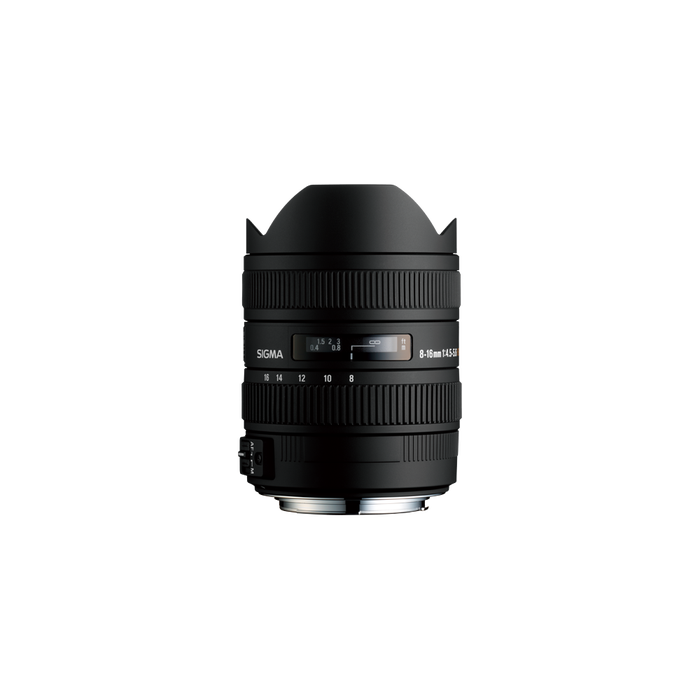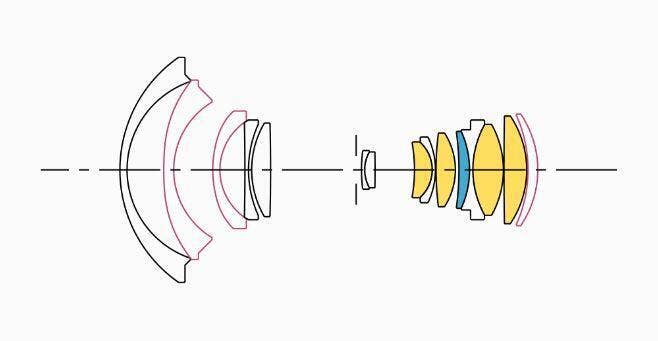8-16mm F4.5-5.6
DC HSM

- First wide angle with minimum focal length of 8mm
- FLD glass with performance equal to fluorite
- Front adapter ring, carrying case, front & rear caps
| Angle of view | Wide Angle |
|---|---|
| Camera Type | DSLR |
| Sensor Size | APS-C |
| Construction | 15 Elements in 11 Groups |
| Angle of view | 114.5° - 75.7° |
| Number of diaphragm blades | 7 |
| Minimum aperture | F22 |
| Minimum focusing distance | 24 cm |
| Maximum magnification ratio | 1:7.8 |
| Dimensions (diameter x length) | ⌀ 75 mm x 105.7 mm |
| Dimensions (diameter x length) | |
| Weight (g) | 555 g |
| Weight (g) | |
| EAN-code | Canon EF 085126203542 |
| Specifications Info | * The appearance, specifications, and the like of the product are subject to change for improvement without notice. *** AF will not function with Pentax ist* series and K100D DSLR cameras that do not support HSM. **** Filters cannot be attached to this lens. |
LENS CONSTRUCTION


|
|
|
|
|
MTF CHART
There are two types of MTF chart. One considers the diffraction quality of light, which is called "Diffraction MTF", and the other, "Geometrical MTF" does not.
The quality of light appears in the diffracted light, and becomes more distinct as the F value gets bigger, resulting in lower image quality. Also, diffracted light exists at every aperture, which is why Sigma has been releasing Diffraction MTF data from the beginning since it is very close to the actual image data.
The advantage of using "Geometric MTF" data is that it is easy to measure and calculate since it does not consider the diffraction quality of light, yet it tends to show higher values in the graph than actual images.
The readings at 10 lines per millimeter measure the lens's contrast ability ( red lines), repeating fine parallel lines spaced at 30 lines per millimeter measure the lens's sharpness ability (green lines), when the aperture is wide open.
Fine repeating line sets are created parallel to a diagonal line running from corner to corner of the frame, are called Sagittal lines (S) and sets of repeating lines vertical to these lines are drawn, called Moridional (M) line sets.
*The MTF chart gives the result at the wide-open aperture.
|
Spatial frequency |
S:Sagittal Line |
M: Meridional Line |
|
10lp/mm |
|
|
|
30lp/mm |
|
|
DIFFRACTION MTF xxMM
DIFFRACTION MTF xxxMM
GEOMETRICAL MTF xxMM
GEOMETRICAL MTF xxxMM
